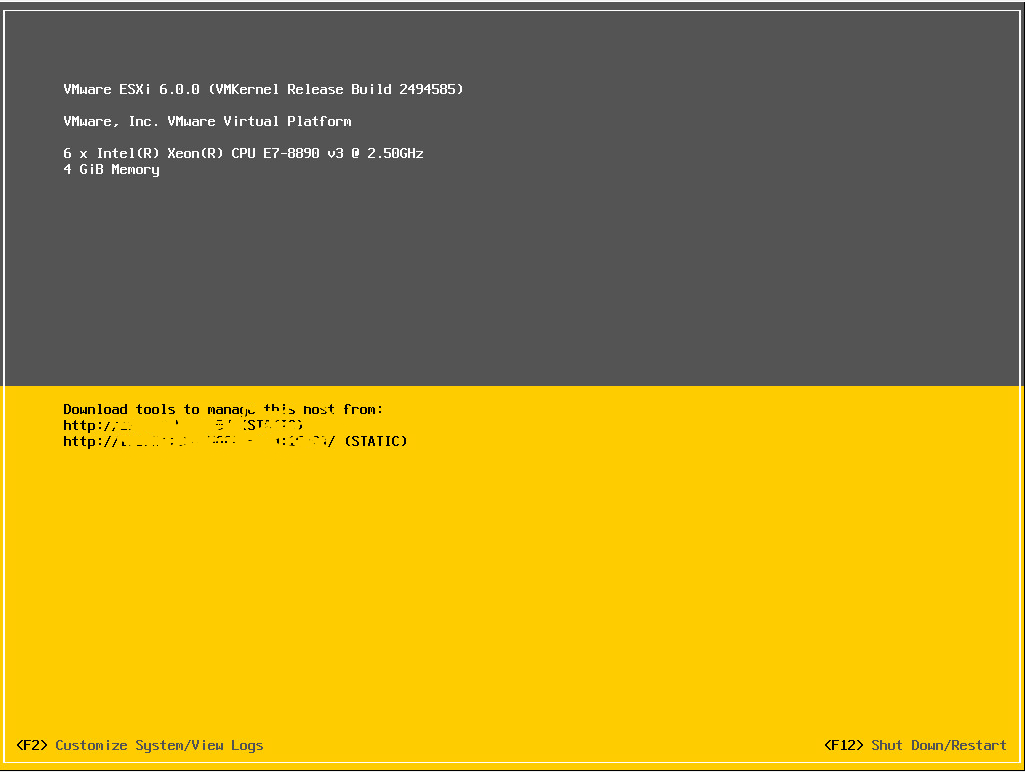

- How to install cucm 8.6 on vmware esxi 5 upgrade#
- How to install cucm 8.6 on vmware esxi 5 full#
- How to install cucm 8.6 on vmware esxi 5 mac#
Around the time 7.1(2) was released, Cisco changed their licensing structure to use something called a “License MAC address”. Once people started installing CUCM in a VM, which wasn’t officially supported in the 7.x train but was possible, it became apparent that a simple MAC licensing scheme wasn’t going to cut it any more, since a VM can be programmed with a specific MAC address fairly easily. If you wanted to install new licenses on the system, you had to ensure they were tied to the MAC of the first node, usually the publisher. In the versions of CUCM from 5.x all the way up to 7.0, this MAC address was the physical MAC address of the first NIC in the CUCM server.


Each of these licenses are tied to a MAC address. As I previously talked about, there are three types of licensing on a CUCM server. Ever since CUCM 5.x was released, the reality of licensing has been present with us. For the purposes of VM labbing and learning, it’s actually slightly more efficient to run CUCM and Connection in two separate VMs and integrate them together rather than using CUCMBE.Ģ. Anything less will cause the installer to think you are installing on something other than a 7828 server and only offer you the choice of CUCM or Unity Connection, not the combined CUCMBE. For the record, if you are trying to install a CUCM Business Edition (CUCMBE) system in a VM, the minimum specs required are 6GB of RAM and 147GB of disk space. I’ve never really had any luck with using thin provisioning on the volume, so I always pre-allocate the space when I create the VM in order to be sure to not have any errors during installation. 72GB is the minimum needed for installation. The hard disk requirements are just as strict.
How to install cucm 8.6 on vmware esxi 5 upgrade#
If your laptop only has 2GB of RAM, it’s probably time for an upgrade if you want to try and run CUCM in VMware Workstation. Once you have completed the installation of CUCM, you can reduce the RAM of the VM to 1GB with no serious effects besides things running a little bit slower inside your CUCM environment. If the CUCM installer can’t see 2GB of RAM when it checks your hardware specs, it will quit and notify you that you don’t appear to be installing on a supported system. Note that the RAM requirement is in addition to the RAM requirement of your workstation if you are installing your VM in VMware Workstation. For the installation of CUCM or Unity Connection, you are going to need to reserve a minimum of 2GB of RAM and a 72 GB hard disk. The biggest roadblock to the installation of CUCM in VMware is matching your server specs to the requirements. Make sure your VM specs match the requirements. That being said, here are some things to keep in mind when virtualizing your CUCM cluster.ġ. They even have some play-by-play videos that you can follow along with. If you’re looking for that, I suggest you head over to and check out some of their excellent resources. This isn’t necessarily going to be a step-by-step guide to the installation of a virtual CUCM system. However, when attempting to install CUCM in a VM, there are some things that need to be taken into consideration.
How to install cucm 8.6 on vmware esxi 5 full#
It seems that installing CUCM in a VM for the purposes of study or replicating a customer environment is a popular option, since the CUCM software can be powered up at will and doesn’t require a rack full of application servers. I’ve seen a lot of chatter lately about virtualizing Cisco Unified Communications Manager (CUCM) and other applications on Twitter.


 0 kommentar(er)
0 kommentar(er)
